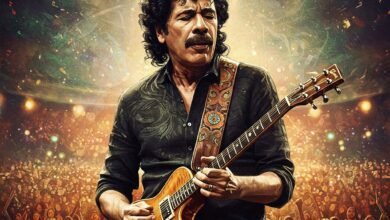The Rising Popularity of Environmental Science among Gen Z Students

Understanding the Appeal of Environmental Science
The increasing fascination of Gen Z students with environmental science can be attributed to a multitude of intrinsic factors. One of the most significant driving forces behind this interest is the heightened awareness of pressing environmental issues that permeate contemporary society. Climate change, pollution, and the alarming loss of biodiversity have become paramount concerns for younger generations who are acutely aware of the impacts these issues have on their future and the planet at large. As this cohort begins to grapple with the realities of these challenges, many are compelled to seek solutions, leading them to pursue studies in environmental science.
Furthermore, educational backgrounds play a crucial role in shaping the interests of Gen Z students in this domain. Many have been exposed to environmental education at an early age, driven by curricula that incorporate sustainability and ecological awareness. Personal experiences, such as engaging in outdoor activities or witnessing environmental degradation firsthand, further catalyze this interest. This firsthand exposure fosters a profound understanding of the interdependence between humans and their environment, motivating students to explore how they can contribute positively through the sciences.
The influence of social media and activism cannot be overlooked in this context. Platforms like Instagram, TikTok, and Twitter have emerged as significant avenues for disseminating information and fostering a community around environmental issues. Gen Z is often galvanized by activist movements led by peers and influential figures who advocate for ecological change. The prevalence of viral content highlighting sustainability efforts serves to amplify awareness and often spurs young individuals into action, whether through participation in local cleanup initiatives or pursuing careers in environmental advocacy. This convergence of factors creates a rich landscape for Gen Z’s engagement with environmental science, marking it as a critical focal point of their academic and professional aspirations.
The Role of Activism and Social Movements
In recent years, activism and social movements have emerged as pivotal forces in shaping the career choices of Gen Z students, particularly in the realm of environmental science. Young people today are increasingly drawn to fields that align with their values and concerns about the planet’s future. Initiatives such as Fridays for Future, inspired by Greta Thunberg, have galvanized millions of students worldwide, encouraging them to advocate for climate action through protests, public speaking, and community engagement. This global movement not only raises awareness about the dire consequences of climate change but also reinforces the importance of pursuing environmental science as a means of effecting real change.
The influence of youth-led initiatives cannot be overstated. Many Gen Z students see themselves as agents of change, taking cues from the activism of their peers. They are motivated by the need to address pressing environmental challenges, including biodiversity loss, pollution, and climate justice. Grassroots movements often highlight the intersectionality of these issues, emphasizing that environmental degradation disproportionately affects marginalized communities. As a result, many students are choosing academic paths that allow them to understand and tackle these multifaceted problems, fostering a generation that is both passionate and informed about environmental science.
The leadership of figures like Greta Thunberg exemplifies the potential of youth-oriented activism to influence the educational and professional trajectories of young individuals. By articulating the urgency of the climate crisis, Thunberg and other youth activists have not only raised awareness but have also inspired Gen Z students to consider environmental science careers. They understand that by studying these subjects and pursuing related professions, they can contribute to policies and innovations that combat environmental issues. Thus, the allure of activism and social movements continues to shape their choices, steering them towards meaningful careers dedicated to sustainability and environmental stewardship.
Educational Opportunities and Career Prospects
As the urgency to address environmental challenges escalates, educational pathways in environmental science are increasingly appealing to Generation Z students. These students have a distinctive relationship with the environment, often motivated by a strong desire to enact change. Degree programs in environmental science are diverse, ranging from Bachelor’s and Master’s degrees to specialized certifications, allowing students to find a course that aligns with their interests and career aspirations.
Many universities now offer comprehensive curricula that encompass critical areas such as sustainability, environmental policy, and conservation biology. Online courses are also abundant, providing flexibility for students who may be balancing work or personal commitments while pursuing their educational goals. Additionally, certifications in specific fields, such as environmental management or renewable energy, can further enhance employability and expertise in a competitive job market.
The growing demand for skilled professionals in the environmental sector underscores the robust career prospects available. Renewable energy has emerged as a significant area, with jobs focused on solar and wind energy installations. Conservation roles are also thriving, aimed at maintaining biodiversity and preserving ecosystems. Furthermore, policy-related occupations allow individuals to influence legislation and advocate for sustainable practices at local, national, and global levels.
Innovative learning experiences are integral to attracting students to environmental science. Internships provide invaluable hands-on experience, allowing students to apply their theoretical knowledge to real-world situations. Additionally, hands-on projects, often linked to local community initiatives, foster collaboration and innovation. These educational opportunities not only equip students with essential skills but also ignite their passion for making a substantial impact on the planet. As the interest in environmental science continues to grow among Gen Z, it is clear that this field holds the potential for both fulfilling careers and meaningful contributions to society.
Interdisciplinary Nature of Environmental Science
The interdisciplinary nature of environmental science is one of the primary factors driving its increasing popularity among Gen Z students. This field amalgamates various disciplines, including biology, chemistry, geography, and social sciences, creating a comprehensive framework that addresses environmental issues from multiple perspectives. By integrating these subjects, environmental science allows students to explore a wide range of topics, appealing to diverse academic interests and encouraging a holistic understanding of complex environmental challenges.
In biology, students delve into ecosystems, organism interactions, and biodiversity, gaining insights into the living components of the environment. Chemistry contributes crucial knowledge regarding the composition, properties, and reactions of substances, essential for understanding pollutants and developing sustainable materials. Geography provides a spatial context, enabling students to analyze how ecosystems function within different settings and how human activities impact these systems. Meanwhile, social sciences contribute an understanding of human behavior, culture, and policies, which are vital for fostering effective environmental advocacy and management.
This confluence of disciplines not only enhances academic engagement but also fosters essential skills such as critical thinking and problem-solving. Gen Z students, who value collaboration, benefit significantly from working in teams to tackle real-world problems. Environmental science classes often emphasize collaborative approaches, mirroring the cooperative nature of modern workplaces where interdisciplinary teamwork is key to innovative solutions. This alignment with Gen Z values of collective effort and social responsibility further propels their interest in pursuing degrees in environmental science, as it cultivates both academic and practical skills pertinent to their future careers.
Ultimately, the interdisciplinary framework of environmental science not only enriches students’ educational experiences but also prepares them to address the multifaceted environmental challenges that society faces today, thereby resonating with the aspirations of Gen Z learners.






















